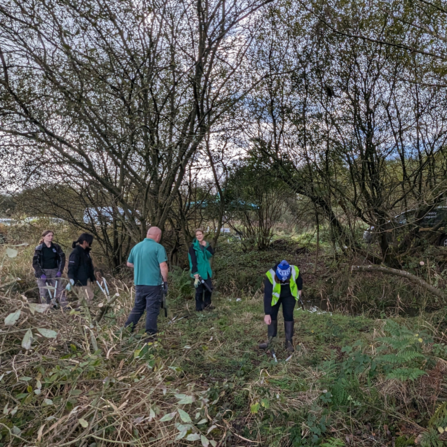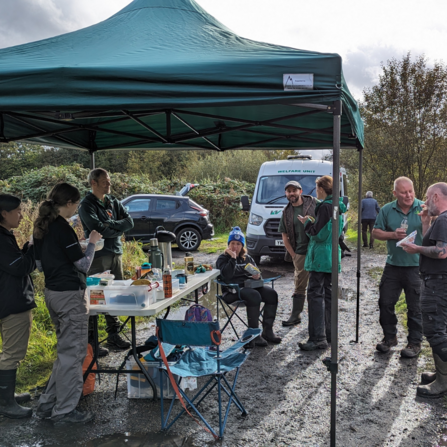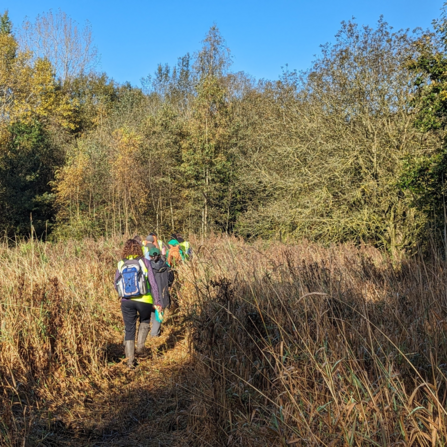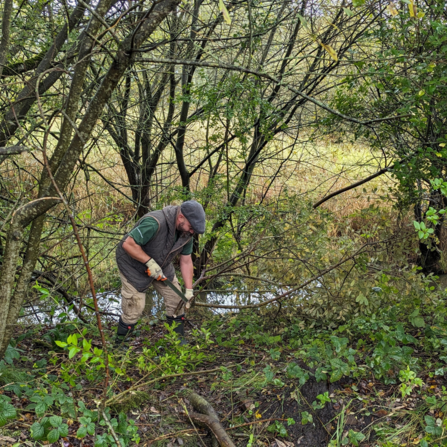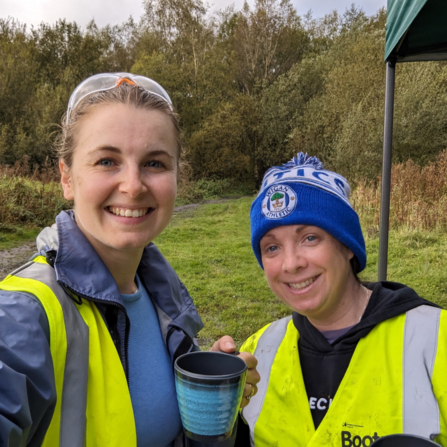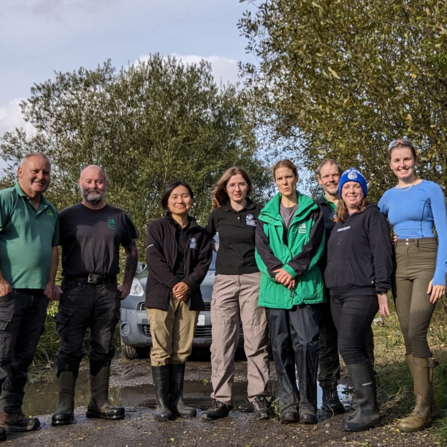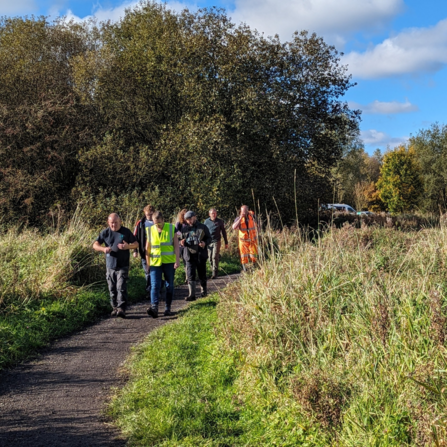
Setting off to help conserve water voles and their homes
Photo by Annabelle Brittle
People often leave resolution-making until January, but I made a decision this autumn to start volunteering in nature as often as I could. As a seasoned wild swimmer I’m no stranger to the great outdoors, but I was keen to start involving myself in practical projects that would benefit my local area.
As well as applying to become a Visitor Engagement Volunteer at Brockholes nature reserve and joining a volunteering group at my local country park, I recently joined staff and volunteers from Lancashire Wildlife Trust and Forestry England for a water vole conservation project.


